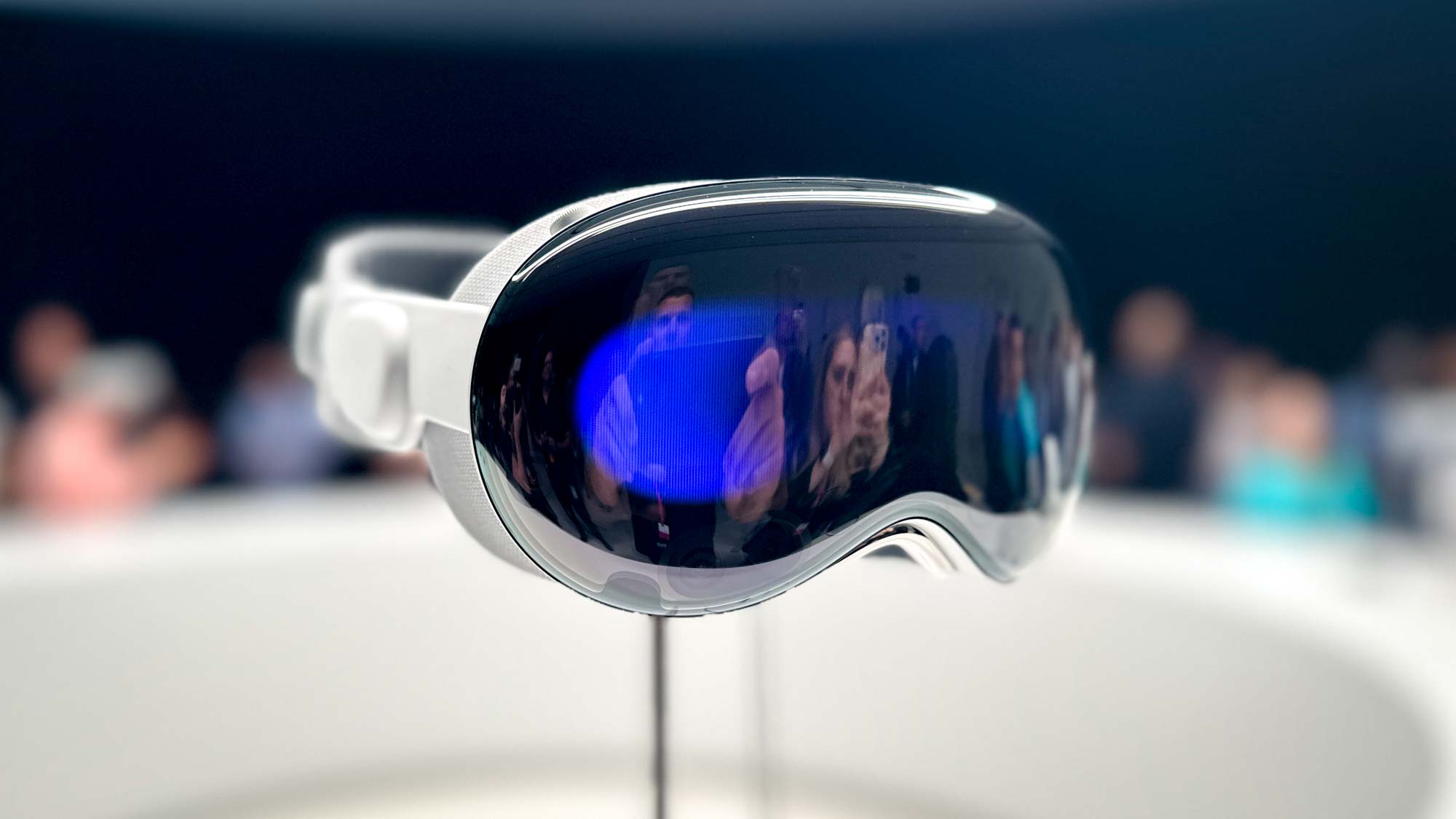Google Maps has a big electric car problem — here's why
Electric cars can struggle over long distances, and it's about time Google took note
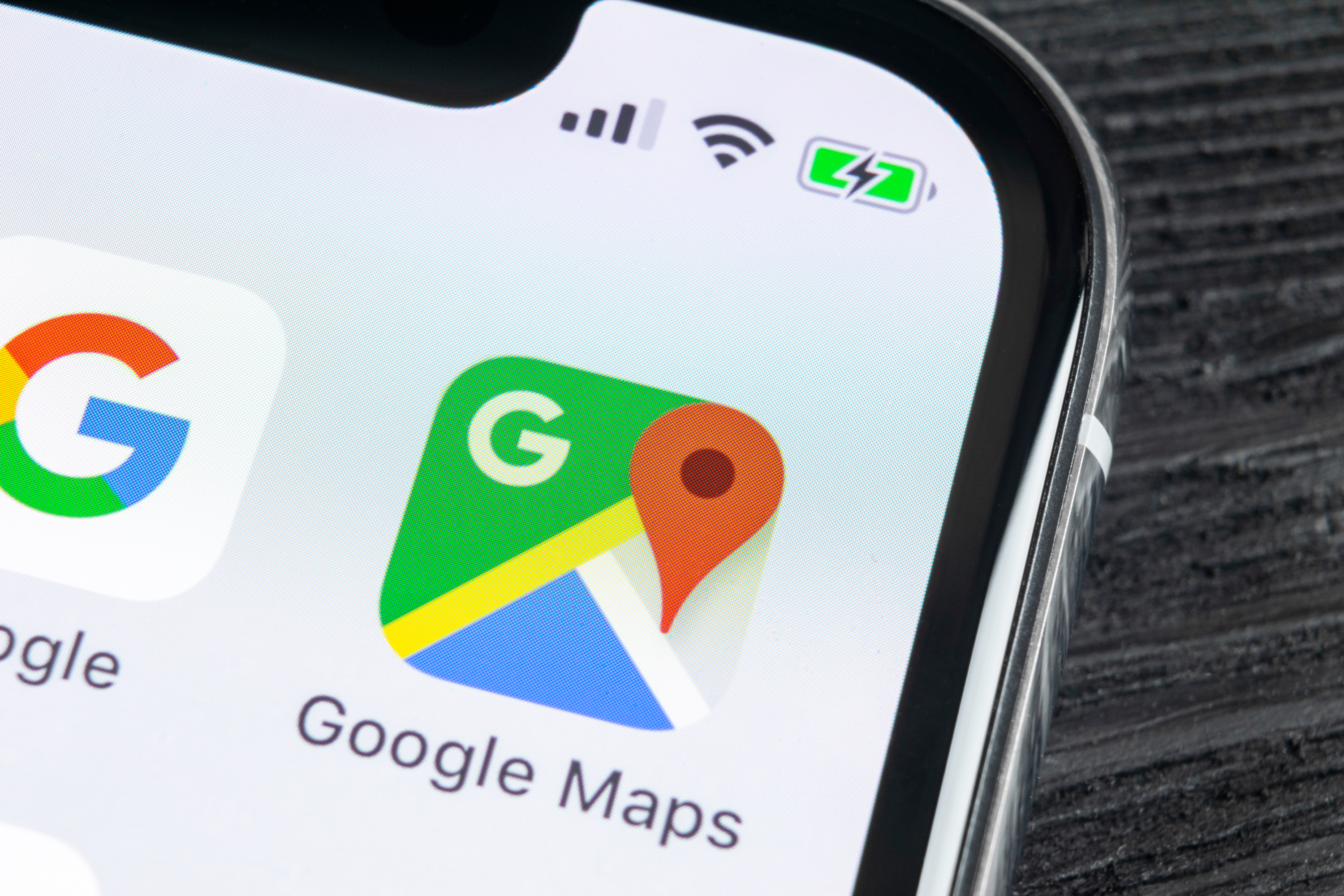
There are a bunch of key differences between electric cars and traditional combustion engine vehicles. The main one is that long distance driving in an EV is much more challenging, on account of the range. Because, like it or not, even electric cars with the longest range can’t compete with a small to mid-sized gas tank on total traveling distance.
One day this reality may change. EV batteries will be able to go several hundred miles without running out of juice. Recharging will be a cinch, since chargers will be ubiquitous and capable of adding hundreds of miles of range in under ten minutes.
But that’s not the case in 2022. It means EV owners of all kinds need to be able to plan out their trips in much greater detail than those of you still powered by gasoline. Unfortunately, the big names in car navigation — including Google Maps — have few, if any, tools to aid electric car drivers. And that's a problem.
Built-in navigation can be hit-and-miss

I know what some people out there are thinking. A lot of modern electric cars, particularly the expensive ones, already have a built-in navigation system that can account for charging stops. Not all of them, but it’s still a not-insignificant number of cars. The main problem is that those services can be somewhat hit and miss.
The navigation on my Nissan Leaf, for instance, looks straight out of the mid-2000s. That’s not an exaggeration either, because it seems remarkably similar to the GPS on my mom’s previous car, a 2005 Toyota Land Cruiser, but with touchscreen controls and not an elaborate array of buttons.
You also have to consider that you don’t know where this navigation came from. Is it a licensed version of an established navigation app, like Google Maps or HERE, or is it something the automaker cooked up in-house? Does it have real-time traffic awareness, and other data-heavy features, and how much is that going to cost you to maintain access?
They’re all questions you have to consider to figure out how to get around. Because your car’s GPS may be able to guide you to charging points automatically, but it may well be at the expense of some other important feature. The obvious exception here is Tesla, which supplies Google-powered navigation in its cars, and makes it very clear this is the case.
Get instant access to breaking news, the hottest reviews, great deals and helpful tips.
Tesla’s Standard Connectivity package, which is free, only offers navigation. Any features that require data, like live traffic, are only available with a subscription to the Premium Connectivity package. That’s $10 a month or $99 a year.
Google Maps, Apple Maps and Waze offer those features at no cost. But the obvious downside for electric car owners is that their EV support is pretty much non-existent.
Third parties can manage it, so why can’t the major league players?
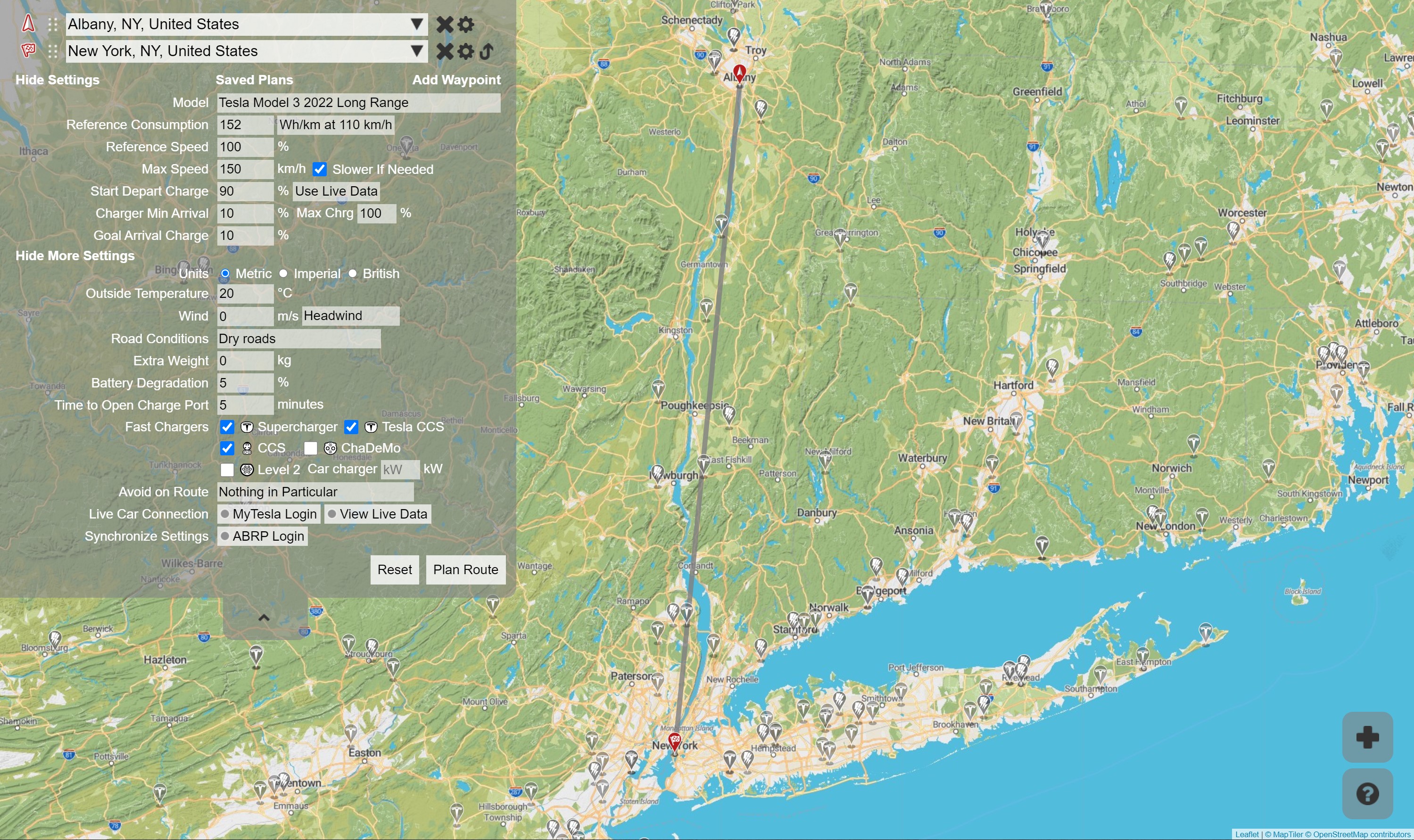
Third-party apps can fill the void, plotting out your route and telling you where and when you should stop to charge — but their navigation sucks.
Third-party apps can fill the void, to an extent, plotting out your route and telling you where and when you should stop to charge — but their navigation sucks. It’s hard to compete with the likes of Google, which has been collecting navigational data for almost 20 years. I recently learned this the hard way.
It’s not too much of a stretch to ask Google to take tools that let apps like A Better Route Planner (ABRP) calculate charging-friendly routes, and integrate them into its product. After all, Google clearly knows a little bit about how electric cars operate.
Google recently updated Google Maps’ eco-friendly routing feature to include electric cars, because someone behind the scenes recognized that a car’s efficiency is partially determined by the way it’s powered. Diesel engines are more efficient at high speeds than gasoline, for instance, while EVs and hybrids do a lot better in stop/start traffic.
It's a welcome upgrade, but not a huge leap. Especially since Android Automotive OS hit the scene.
For those that don’t know, Android Automotive OS is the version of Android that powers a car’s infotainment system. This also means that the built-in navigation software is a connected version of Google Maps, along with all the benefits that it has to offer. But the fact that this software is a key component of the car in question offers advantages you can’t get on your phone, or regular Android Auto.
The Polestar 2 is one of the first cars to run Android Automotive, and like many of its rivals the car offers intelligent route planning that takes automatically charging stops and battery level into account.
Crucially, Polestar claims that this route planning is powered by Android Automotive and Google’s Android Automotive Services — meaning this is a Google feature, rather than something developed by Polestar or parent company Volvo.
Google has what it takes to make EV road trips better
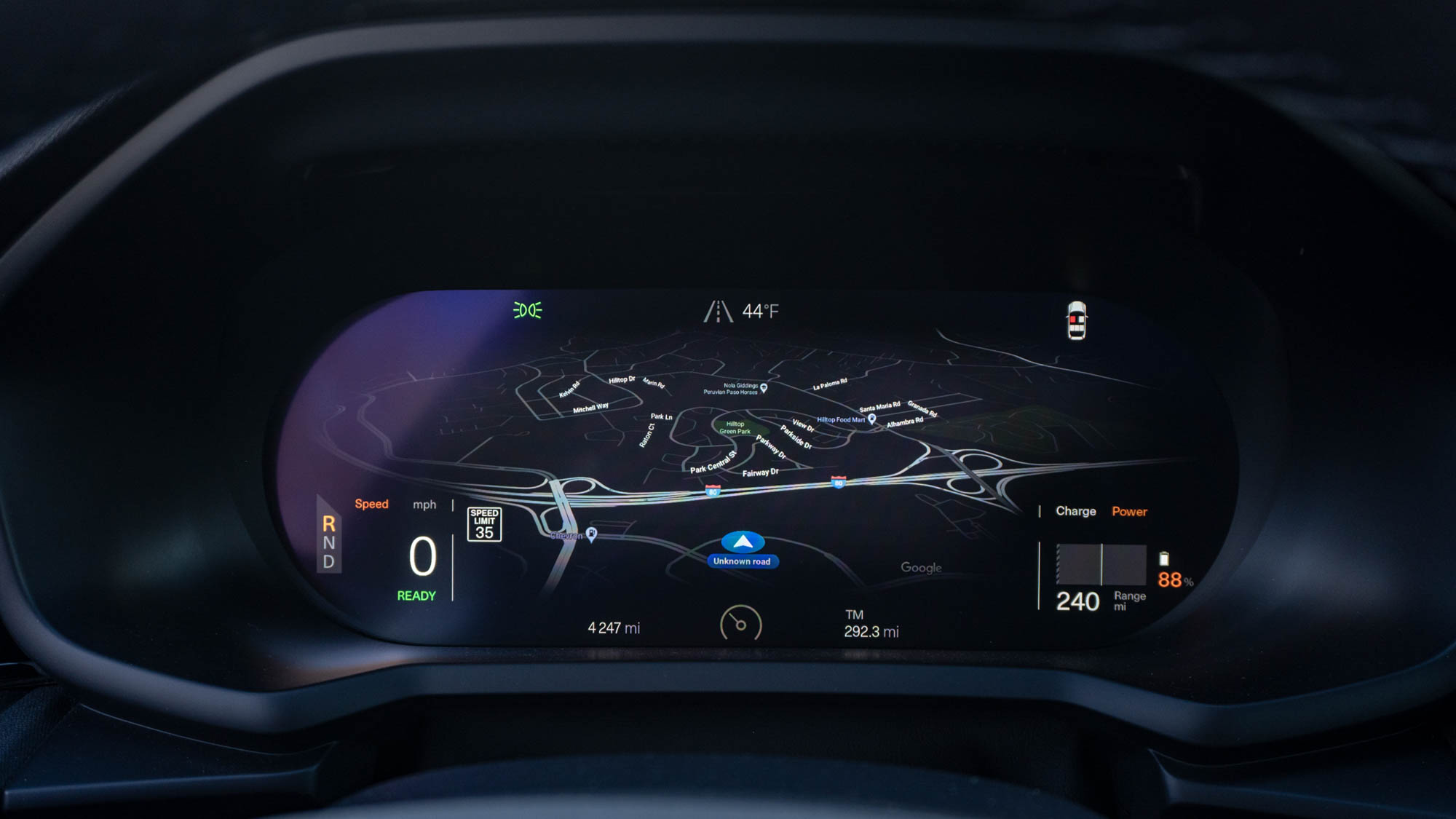
Naturally, Google’s end goal is to have all car’s running Android Automotive OS, much in the same way that it will want all phones and gadgets running on some kind of Android.
Google should take its route planning tools from Android Automotive and stick them into an app everyone can access regardless of what car or phone they have: Google Maps
The odds of that happening are slim to none, especially when you have a bunch of rivals muscling in on the same space. Apple has grand plans to improve the scope of CarPlay, and further integrate it into car systems, and it’s unlikely that Tesla would ditch its own custom-made software in favor of Google’s. The company doesn’t even support regular Android Auto, for crying out loud.
Which is why Google should be working on taking its route planning tools out of Android Automotive, and sticking them into an app everyone can access regardless of what car or phone they have. So long as the range calculations are reasonably accurate, and the navigation is pure Google Maps, I will be happy. Even if that means punching in a bunch of numbers, like the estimated weight of all my passengers and my assumed average speed, before I set off.
It doesn’t even have to be a part of the main Google Maps app, considering the software is already fairly bloated and overstuffed with various features. A standalone app would work just as well, because if it works the EV drivers will download it. Most of us are already used to having a bunch of driving-centric apps installed on our phones, so one more won’t make a difference. Especially if it’s good.
It wouldn’t be a huge surprise if Google had the pull to be able to bring all the charging networks into the fold. That could ensure all public chargers are visible in a single location. Because, right now, that’s not always the case and tends to be reliant on crowdsourcing that information from drivers.
Hopefully that could have the added benefit of offering more consistent live usage data, because nothing is worse than pulling up to a charger on fumes and finding it’s broken. Again, this is one of those things the Tesla navigation system excels at, but only with Tesla chargers and if you pay for the privilege.
An app can’t replace the connection between your car and itself
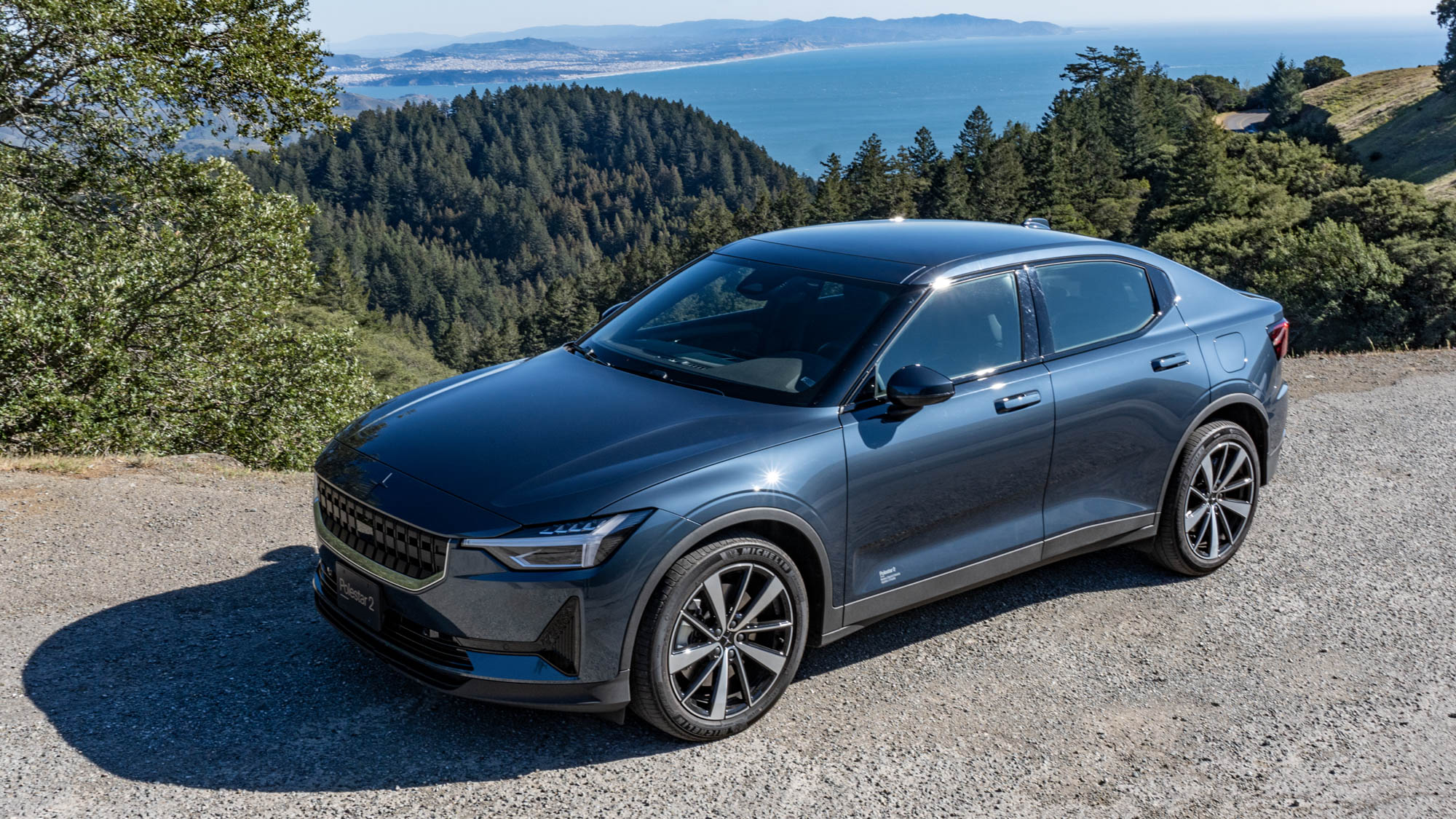
The elephant in the room here is that built-in navigation is so effective because of the fact it’s part of the car. The car’s computer has access to a wealth of data that you can’t hook up to a smartphone app on a whim. In this instance it’s primarily battery level and power consumption.
A phone, on the other hand, can only estimate this. Some EV planning apps do give you the option to input power consumption (in kWh or Wh per mile), which can improve its calculations. But it doesn’t have access to that data in real time, the same way a car’s own navigation system does.
This isn’t to say that we shouldn’t try to get the best possible estimation in a smartphone app. Combined with some solid navigational prowess, of course. If anything, it’s a great place to start and that is better than nothing at all.
Who knows, maybe someday someone can figure out a way to hook a navigation app up to the car’s OBD port and pull out the relevant data that way. The best OBD-II scanners can see a huge amount of information, and there are plenty of options that can transfer that information to phones via Bluetooth.
Combined with the fact EV capable OBDs can see all the battery details that are usually hidden from view, it’s not impossible to imagine a navigation/OBD pairing being possible.
Of course, this would actually require someone to sit down and try to make it happen. Considering the prominence of built-in intelligent navigation, and the fact it would require someone to pay for a separate product, I’m not so confident in it actually happening. It’s cool to think about, though.
Bottom Line
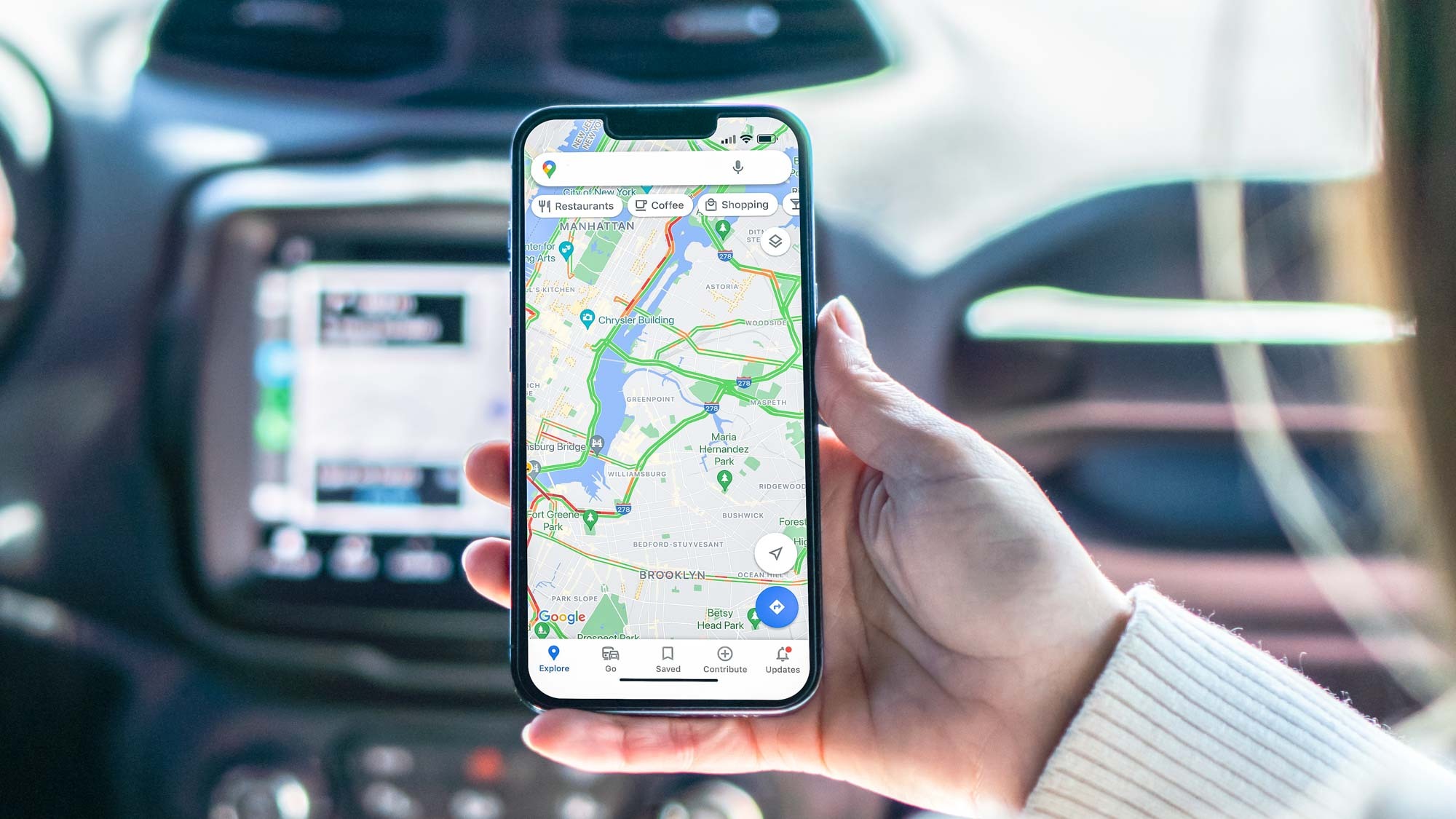
Services like Google Maps have set a very high bar for turn-by-turn navigation, to the point where you kind of need Apple-level money to have any hope of being able to catch up. Google Maps is capable of changing and improving at a level that makes that the case. It’s just unfortunate that it’s not adapting to changes in the driving landscape quite as rapidly.
Even in a long-range car, driving in an EV can be something of a challenge. You need to know where the chargers are, what their status is, when you should expect to plug in, and what the most efficient route is at any given moment. Phone apps with those features do exist, but they either have poor navigation, poor EV planning features or are pretty complicated and annoying to use.
That needs to change, because the electric car industry shouldn’t have to be at the mercy of whatever navigation system an automaker installed in your car — or whatever update schedule they’ve worked out. It doesn’t have to be Google, but it makes more sense for Google Maps to be the pioneer of this. After all, it already has the software and services to figure this out. The issue is that it’s only available in expensive cars.
I’m an Android-wielding Google Maps user, which means I’m a little biased, and it doesn’t have to be Google. Should Apple Maps come out with some EV-heavy features at WWDC 2023, I’d celebrate that fact.
But, as it stands, it makes more sense for Google Maps to be the pioneer. Especially since it already has a system that can intelligently plan navigation in an EV. All I want is to be able to access that software without having to buy a $50,000 car for the privilege.

Tom is the Tom's Guide's UK Phones Editor, tackling the latest smartphone news and vocally expressing his opinions about upcoming features or changes. It's long way from his days as editor of Gizmodo UK, when pretty much everything was on the table. He’s usually found trying to squeeze another giant Lego set onto the shelf, draining very large cups of coffee, or complaining about how terrible his Smart TV is.
